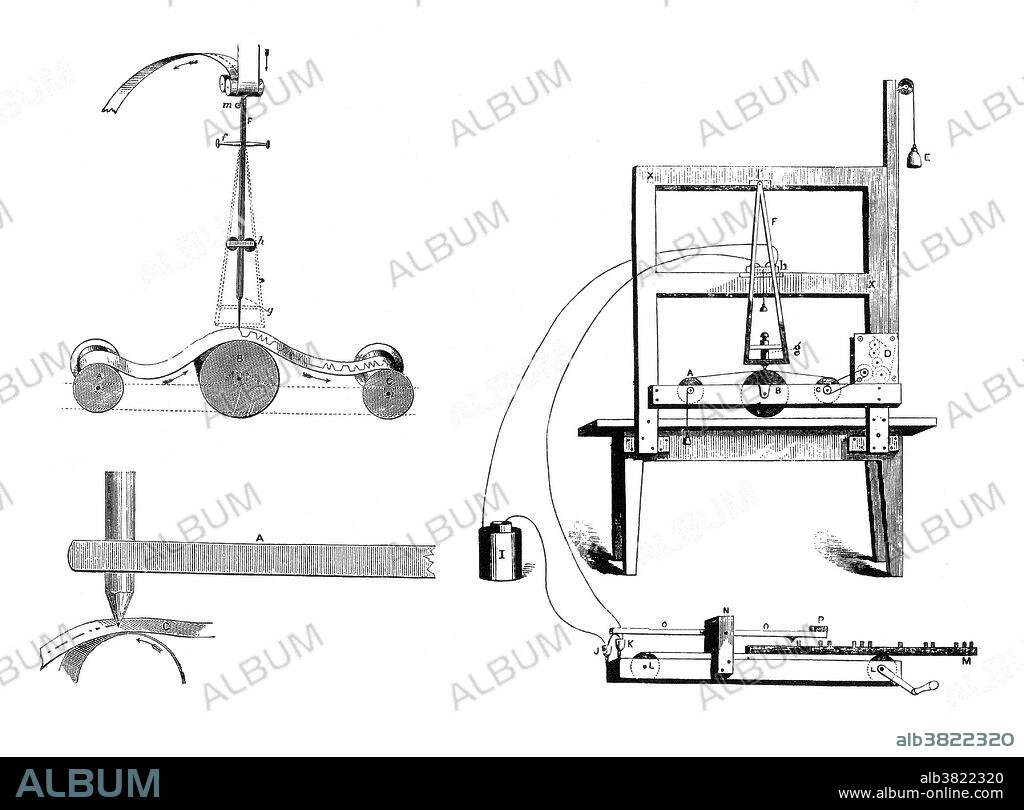alb3822320
Samuel Morse, Original Telegraph Receiver

|
Ajouter à une autre Lightbox |
|
Ajouter à une autre Lightbox |



Avez-vous déjà un compte? S'identifier
Vous n'avez pas de compte ? S'inscrire
Acheter cette image.
Sélectionnez l'usage:

Titre:
Samuel Morse, Original Telegraph Receiver
Légende:
Voir la traduction automatique
An electrical telegraph was independently developed and patented in the United States in 1837 by Samuel Morse. Morse's first telegraph receiver made from a modified canvas stretcher. The original receiver was an electromagnet which actuated a pencil pressing down on a moving strip of tape. Each pulse from the sender made the pendulum swing. The paper tape then showed a series of sawtooth marks that corresponded with the ridges of the original slug and the message could be deciphered from the paper strip. Morse's original plan did not include a key. Instead, he copied the early printer's use of a composing stick. Slugs of metal wire were ridge along one face and each slug represented a letter. The entire message was mounted in a line of slugs and pushed along beneath a wooden finger that made and broke the circuit. His original code was too complicated to be memorized.
Personnalités:
Crédit:
Album / NYPL/Science Source
Autorisations:
Modèle: Non - Propriété: Non
Questions sur les droits?
Questions sur les droits?
Taille de l'image:
4350 x 3217 px | 40.0 MB
Taille d'impression:
36.8 x 27.2 cm | 14.5 x 10.7 in (300 dpi)
Mots clés:
 Pinterest
Pinterest Twitter
Twitter Facebook
Facebook Copier le lien
Copier le lien Email
Email
